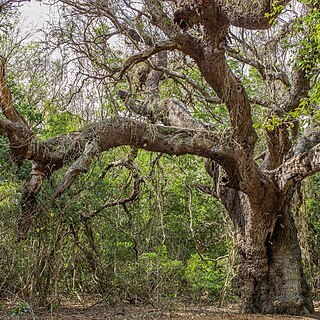Leaves 2-8 cm. long (rhachis + petiole); rhachis with a sessile, usually barrel-shaped or cylindrical gland between each pinna-pair; no glands between leaflet-pairs; pinnae 4-7 pairs; leaflets 6-19(27) pairs, 3-11 x 1-3 mm., ± linear-oblong or oblong; lateral nerves often ± raised beneath.
Tree up to 25 m. high; bark rough or sometimes smooth; branchlets puberulous or shortly pubescent when young.
Flowers white or creamy, in spikes 4-9 cm. long.
Anthers without an apical gland.
Seeds 3·6-5·7 x 1·3-2·1 cm.
Pod 9-30 x 1·4-2·6 cm.


